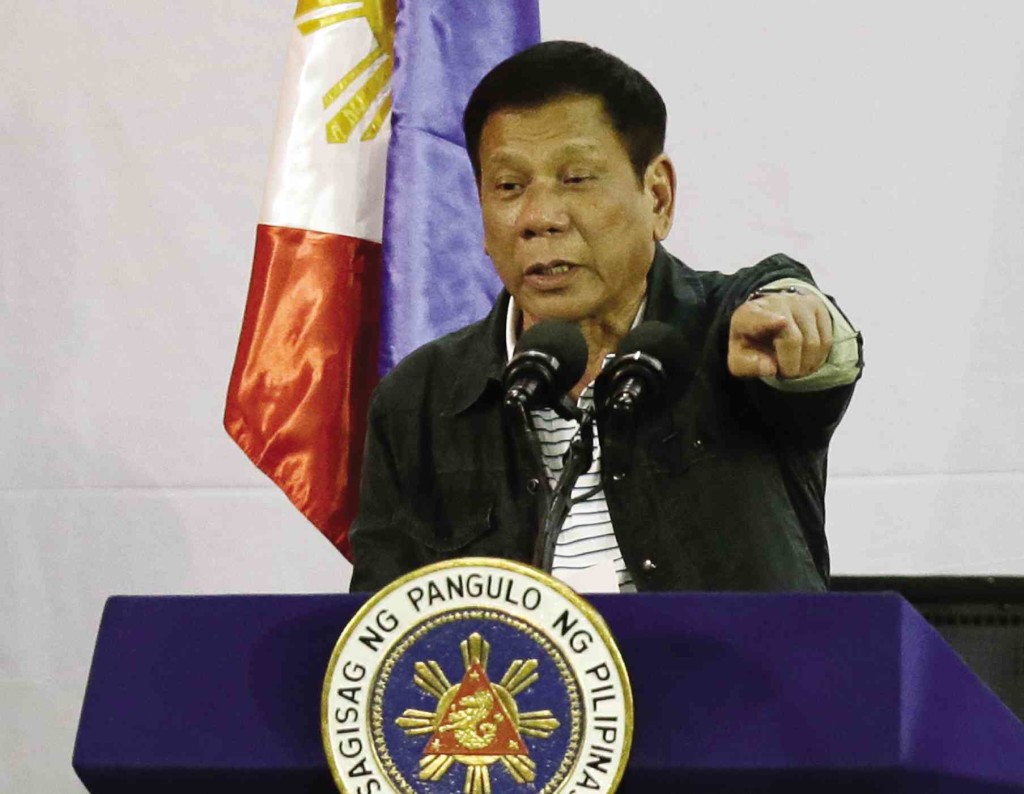Economic blueprint brings cheer to investors

The business community warmly received the blueprint for the country’s economic future under President Duterte’s leadership.
Without an imminent threat to skew the country’s economic trajectory, corporate profits are expected to continue climbing, which is good news for investors.
Prospects are bright for the two major asset classes available in Philippine financial markets—fixed income securities or debt; and stocks or equities.
“The sentiment is very positive,” First Metro Investments Corp. advisory and trust group head Bede Lovell Gomez said. “We had a well-accepted election results and the new administration’s policies seem to favor the business community.”
Economic growth is seen boosting corporate earnings. In the first quarter of 2016, domestic output rose by 6.9 percent from the previous 6.5 percent.
Local share prices reflect the optimism. In June, the benchmark Philippine Stock Exchange Index (PSEi) rose more than 5 percent, outperforming all other major emerging market Asian bourses.
Article continues after this advertisementThe think tank Capital Economics expects the PSEi to end the year at 7,500 (from end-June’s 7,776) before rising to 8,000 by the end of 2017.
Article continues after this advertisementDebt market activity has been more subdued, although investors have reason to hope. Peso-denominated bond sales reached $4 billion in the first quarter of 2016, up by double digit rates year-on-year and quarter-on-quarter, according to data from the Asian Development Bank.
Yields are expected to go up in the coming months although inflation will start to rise from historic lows and despite uncertainty overseas. This bodes well for more conservative investors who prefer bonds over riskier equities.
ADB said bond yields in most emerging East Asian markets fell between March and May this year owing to a weak global economy. The exceptions were China and the Philippines, “where yields generally picked up.”
FMIC’s Gomez said the United Kingdom’s recent decision to leave the European Union led to volatility in global markets, staying the US Federal Reserve’s from committing to a June rate-hike, which previously seemed inevitable.
Changes in local monetary policy are also expected to put some pressure on rates. The Bangko Sentral ng Pilipinas (BSP) introduced this year the interest rate corridor (IRC), a major shift in the way its policy rates are controlled.
The IRC involves weekly term deposit auctions by the BSP, which gives the central bank more control over the amount and cost of money circulating in the economy. Tighter liquidity conditions are expected to lead to a less conservative Bureau of the Treasury, which in the past few years was content to let treasury bill and bond rates reach record lows.
“It’s a preemptive move… For [the BSP], the IRC should create some leeway and give it more flexibility. Rates cannot stay low. Rates can start to move higher. We’ll see more awards in coming auctions,” Gomez said.
Big local firms are front-loading bond issuances to borrow cheap cash ahead of the expected rise in rates.
Mall operator SM Prime Holdings (SMPH) disclosed in May its intention to issue up to P60 billion in bonds over three years, starting with 10-year IOUs worth P5 billion that comes with an option for over subscription to double the amount.
Conglomerate San Miguel Corp. meanwhile, is raising P15 billion through the sale of five, seven, and 10-year bonds to refinance an old bank loan. Ayala Corp, which has interests in real estate, banking and telecommunications, raised P10 billion from a bond sale early last month.
Underpinning projections for stocks and bonds is the new administration’s plan to increase the state’s budget deficit to allow higher spending.
The country’s new economic managers have adjusted the government’s budget deficit ceiling to 3 percent of gross domestic product (GDP), up from 2 percent during President Aquino’s term.
Despite the Aquino administration’s old deficit ceiling, fiscal spending consistently underperformed in 2010 to 2016 due to the state’s inability to spend fast enough because of bureaucratic bottlenecks and inadequate planning by line agencies.
On the back of disbursements growing faster than revenues, spending improved in the first half of 2016, latest government data showed. From January to April, the government posted a budget deficit of P57.5 billion. In the same period last year, the state had a surplus of P19.1 billion.
Stronger spending in the coming years should help sustain the country’s economic growth, lifting prospects for private companies. “As long as we don’t have runaway inflation, corporate earnings are expected to remain healthy,” Gomez said.
He noted that higher disbursements would “put some pressure on yields.”
He said most people expected interest rates to climb, but he advised investors to stick to shorter-term securities in the “belly” of the yield curve to minimize risk. These would be securities maturing in seven to 10 years. “Anything longer than that is a bigger risk,” he said. TVJ